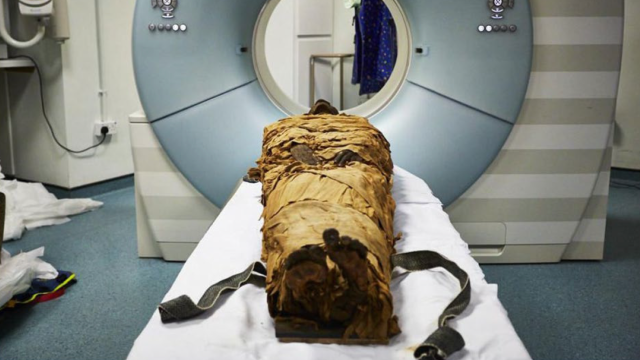Have you ever wondered what an ancient Egyptian mummy would sound like if it could talk? A wild new scientific experiment has finally answered this burning question, but the result is perhaps less impressive (and certainly less ominous) than you might think.
The sound of a vocal tract from a 3,000-year-old mummy has been recreated using CT scans, a 3D-printer, and a voice synthesiser. Details of this achievement—such as it is—were published today in Scientific Reports.
Like me, you’re probably wondering why the scientists who embarked on this project bothered to do such a thing. It’s not like mummies make a habit of returning from the dead to moan and groan at us. But as study co-author John Schofield explained, he and his colleagues simply wanted to see if it could be done, which is a good enough reason as far as we’re concerned.
“We wanted to see whether we could recreate a voice from the past,” Schofield, an archaeologist from the University of York in the U.K., told Gizmodo. “We did this both to enhance our understanding of the past culture as well as demonstrating that this could be done,” to which he added: “Part of the motivation was also to enhance ways that people can engage with the past, at museums and heritage sites for example.”
Each of us produce distinctly different sounds based on the unique dimensions of our vocal tracts. For the new study, the researchers sought to characterise the dimensions of an ancient Egyptian individual, specifically an Egyptian priest named Nesyamun. Conveniently enough, Nesyamun was awarded the epithet “true of voice” when he passed away. Like other mummified dignitaries, Nesyamun was “wrapped in such a way to preserve the body for its passage to the afterlife,” explained Schofield, which meant that “soft tissue survived, including, for this study, the thoral cavity.”
Remarkably, the state of preservation was very good, with the vocal tract retaining enough physical integrity to proceed with the experiment. Data acquired from a non-destructive CT scanner was used to 3D-print a replica of the mummy’s vocal tract. In turn, the vocal tract model was combined with an artificial larynx called the Vocal Tract Organ, which is often used for speech synthesis. This allowed the researchers to reproduce a single vowel-like sound, which in the English language is akin to a sound caught between the words “bed” and “bad.”
This lone vowel sound, to be fair, is rather underwhelming and somewhat unbecoming of an esteemed Egyptian priest. But that’s what the simulation came up with, so who are we to argue?
Only one sound could be reproduced because “the vocal tract has only one shape here—the shape as he lies in his sarcophagus—that produces just one sound,” said Schofield. To create more, “we shall be looking to manipulate that vocal tract shape on the computer to enable other speech-like sounds to be made, and in the future, running speech phrases are potentially possible,” he said.
Indeed, with this proof-of-concept experiment done, the researchers can now look to other possibilities, such as recreating words and even entire sentences. Hopefully they’ll be able to make the mummy sound more sinister, but these early results would suggest otherwise.
